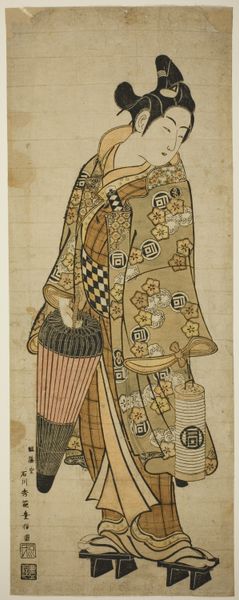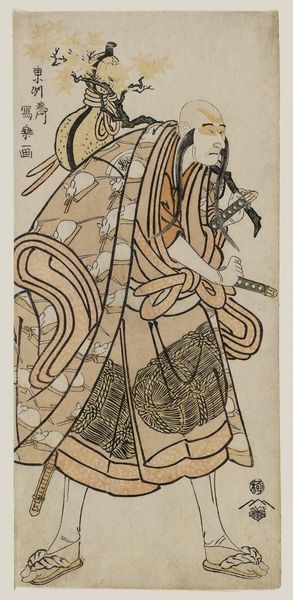
graphic-art, print, typography
#
graphic-art
#
art-nouveau
# print
#
book
#
typography
#
decorative-art
Dimensions: height 187 mm, width 110 mm
Copyright: Rijks Museum: Open Domain
Curator: This is Nakazawa Hiromitsu's "Bloem van dromen," created in 1906. It’s an intriguing example of graphic art from the Art Nouveau movement, a book cover, to be exact. Editor: There’s something about its faded hues that's incredibly captivating. A muted palette gives it an aged and gentle feel. The layout suggests the potential for deeper understanding, hidden narratives. Curator: Absolutely. Looking at the materials, this print, combined with typography, moves beyond mere surface decoration. Hiromitsu worked to reconcile craft and industry; he took printing, usually commercial, and elevated it through artistic treatment. Think about who would have possessed this book – a deliberate consumer making a cultural choice. Editor: And I see not just consumerism, but a conscious declaration. This piece, through its stylization, speaks to the yearning for escapism and fantasy common around the turn of the century. The blossoms, even abstracted, become symbols for something more than just mere decoration. Where does one find the book now? In the Rijksmuseum. What does that say? Curator: It’s interesting you point out the flowers. Considering the Art Nouveau period's embrace of organic forms, these 'bloemen' can also speak to burgeoning industrial processes. Hiromitsu seems intent to subtly marry nature to production through simplified, repeating forms that mirror mechanized processes. The typography itself adds another layer of mechanical input to its artfulness. Editor: I can definitely appreciate the materiality's connection to the shifting social landscape, and the transition from handcraft to factory-made, all framed with a uniquely East Asian sensibility. You said it all started in production and now has landed in the institution as a form of consumption. Now you see all kind of visitors. It bridges cultures too; you can see it’s also Western in many respects with some non-European signifiers, that speaks to a much broader socio-political atmosphere. Curator: Precisely, these seemingly innocuous details can offer nuanced interpretations that can challenge conventional historical accounts of this particular movement, which also prompts a deeper understanding about the artwork itself. Editor: Ultimately, through considering its place as a manufactured product elevated to art and a piece speaking to individual and collective longings, we realize this work becomes more meaningful.
Comments
No comments
Be the first to comment and join the conversation on the ultimate creative platform.













